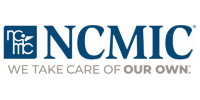The CMS just blinked in the ongoing cold war between providers and the agency over meaningful-use requirements for electronic health-record systems.
The CMS announced Thursday that it is considering proposals to shorten the meaningful-use reporting period to 90 days in 2015, something providers and others have been requesting.
Shortening the period essentially means providers can meet the meaningful-use requirements and avoid financial penalties with software in place for less time than is currently required.
The College of Healthcare Information Management Executives, a key advocate for changes in the reporting period, was positive about the announcement. “It is indeed” what the organization was looking for, said Jeff Smith, the organization's vice president of public policy.
In a separate statement, Russ Branzell, CHIME's president and CEO, said, “Meaningful use has the potential to be a transformative program for the nation's healthcare delivery system and we commend CMS for recognizing the need for a course-correction.”
The Medical Group Management Association and the American Medical Association praised the CMS for agreeing to modify the window, and they urged the agency to issue the new rule quickly. The MGMA noted that the number of physicians who have attested to meeting the program's Stage 2 requirements dropped sharply from the number who cleared the first bar.The AMA, meanwhile, also took a broader swipe at the program, saying that it fails to "help physicians improve care for their patients."
The CMS also is considering changing reporting periods to the calendar year to “allow eligible hospitals more time to incorporate 2014 Edition software into their workflows and to better align with other CMS quality programs,” and will “modify other aspects of the program” that may lessen providers' reporting burdens.
The CMS clarified that the rulemaking on reporting period flexibility will be separate from the upcoming third-stage meaningful-use rule, which may be released in March.
The changes may mollify calls from providers and legislators to change reporting periods. Rep. Renee Ellmers (R-N.C.) and 29 fellow House Republicans had sent a letter to Sylvia Matthews Burwell grousing about the reporting periods in the program. Bipartisan legislation also had been introduced by Ellmers and then-Rep. Jim Matheson (D-Utah) to change the reporting periods.
Follow Darius Tahir on Twitter: @dariustahir




